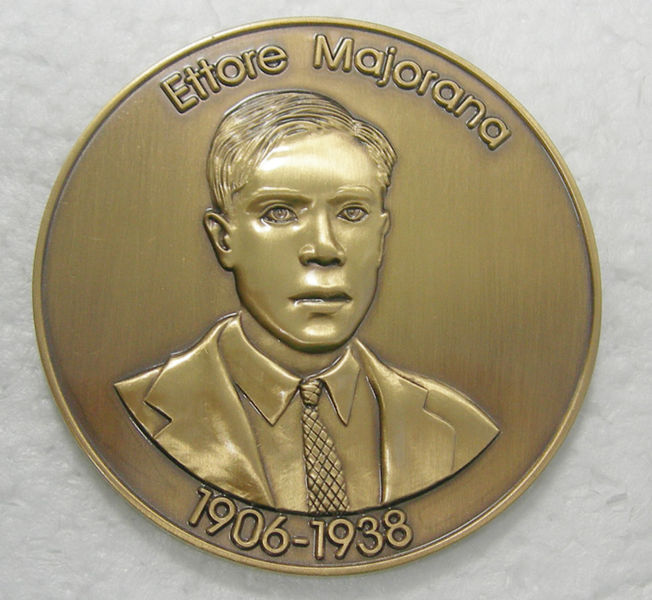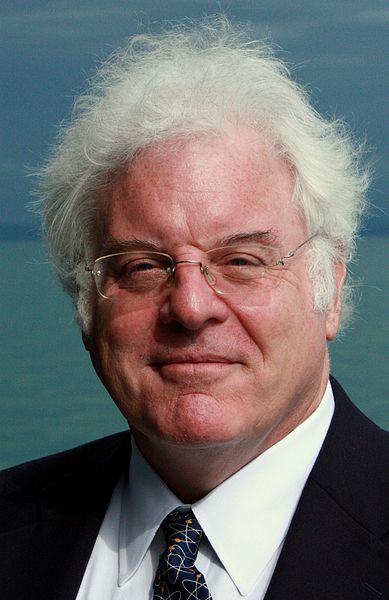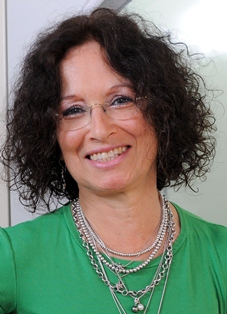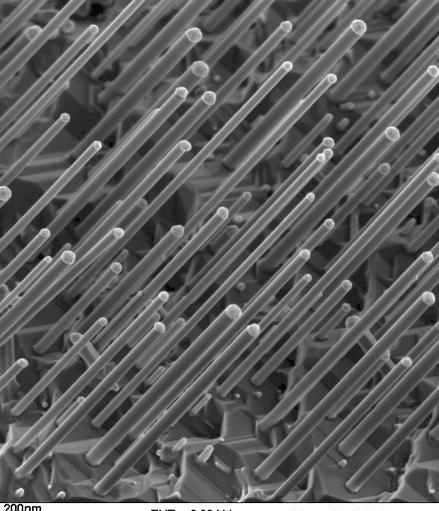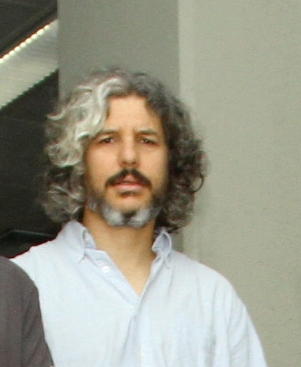Here is a tangled tale of four research paths that intersected in a surprising way in the Weizmann Institute’s
Braun Center for Submicron Research. It combines high drama with subatomic physics, things with their opposites and, above all, the never-ceasing struggle to understand the basic nature of our world.
The first part of the story took place in 1937. In that year, Ettore Majorana, a 31-year-old Sicilian theoretical physicist, published a paper in which he expanded on an idea of another physicist, Paul Dirac. Just four years older than Majorana, Dirac had already received a Nobel Prize in physics in 1933. Among other things, he predicted the existence of antiparticles – for instance, the positron, which is identical to the electron but with an opposite, positive charge. Antimatter particles, which have since been observed in the lab, were at that time a radical idea. But it was an idea that changed the way physicists thought about the structure of matter in the universe.
In his 1937 paper, Majorana took Dirac’s formula one step further, proposing that it is possible, in theory, to have an elementary particle that carries no electric charge; such a particle would, in fact, be its own antiparticle. This theoretical particle became known as Majorana’s fermion (a fermion being a particle of matter, rather than a force-carrying particle such as a photon).
Majorana’s personal life adds intrigue to the story: Although a gifted scientist who published his first scientific paper as an undergraduate, he was mentally unstable. His mentor, Enrico Fermi, called him a “genius of Newton’s rank.” But even as Fermi managed to convince him to publish his antiparticle paper, Majorana was becoming increasingly reclusive. Finally, in 1938, he boarded a ship in Palermo bound for Napoli. But he never disembarked. Although it is fairly certain that Majorana committed suicide, rumors of his having escaped to a monastery helped fuel the mystery surrounding the theory of a particle that is its own antiparticle.
Imaginary particles
The story picks up in 1982 with Robert Laughlin, an American physicist. Laughlin, in proposing an explanation for a quantum phenomenon called the Fractional Quantum Hall Effect, which occurs in semiconductors, made the claim that in certain circumstances imaginary particles – arising through the collective behavior of electrons – are formed and that these carry electric charges. Interestingly, the proposed charges were fractions of the basic charge of an electron.
Such imaginary particles were expected to appear in Quantum Hall systems – systems in which electrons moving in a two-dimensional layer are exposed to a strong magnetic field. The proposed charges were odd fractions – one-third, one-fifth, etc. – of an electron’s charge.
This prediction was first proven experimentally in 1997 by the Weizmann Institute’s
Prof. Moty Heiblum and his research group – an achievement that contributed to the decision to award Laughlin, Stormer and Tsui the Nobel Prize in Physics in 1998. But before long, other research into quantum phenomena began to hint at the existence of imaginary particles with completely different characteristics, those with fractional charges that were even – one-half, one-quarter, etc. Heiblum and his group succeeded in proving the existence of these charges, as well, a feat that depended on the growth of ultra-pure semiconductor crystals by the Institute’s Dr. Vladimir Umansky in the Braun Submicron Center.
Quantum switches
Imaginary particles come in two types: Abelian and non-Abelian. These mathematical terms, from the field of topology, refer to what happens when two particles in a system change places. Unlike the Abelian type, in the non-Abelian system (in which the particles have even denominators), this exchange moves the system from one quantum state to another. These quantum states are sensitive only to the topology of the path taken by the two particles in the exchange process.
Because their quantum state is modified only when they switch positions, such exchanges of non-Abelian particles (often called “braiding”) should be resistant to local perturbation. They could thus form the basis of a robust type of quantum computing known as topological quantum computation. Though abstract and theoretical, these findings have lately begun to garner interest, including a recent sizable contribution by software giant Microsoft to further the research.
Small Is beautiful
Another research path, which opened in 2007, began with an insight more common to sculpture than quantum physics: The level of detail that sculptors can achieve in their artwork is limited by the width of their finest carving tool. Past a certain physical point, the only way to introduce greater detail into the sculpture is to shape it from bottom up, by piecing together very tiny bits of stone. The dimensions of the smallest details will thus be determined by the size of the smallest stones.
Dr. Hadas Shtrikman used this insight in her Weizmann Institute lab, moving from growing two-dimensional crystals that were further miniaturized to nanowires that can be used directly in electronic devices. Working with Dr. Ronit Popovitz-Biro over several years, she managed to grow nanowires with perfect crystal structure and so thin that, for all practical purposes, electrons flow through them in one dimension.
States
The final path in this story began in 2001, with Prof. Alexei Kitaev, a former visiting scientist at the Weizmann Institute. Kitaev suggested that quantum topological memory could be created using a new version of non-Abelian imaginary particles – particles without any charge that would have the properties of Majorana particles. These would not be true Majorana’s fermions, which are particles of matter, but complex imaginary particles in which the lack of charge would be both a “state” and its own “anti-state.”
A few years later, in 2010, the Institute’s
Prof. Yuval Oreg and his colleagues Prof. Felix von Oppen of the Open University Berlin and Prof. Gil Refael of the California Institute of Technology described the possibility of creating quantum states containing complex imaginary particles that behave like Majorana particles. To do this, they proposed a relatively simple experimental system, based on one-dimensional semiconductor nanowires placed near a superconductor, with a weak magnetic field applied along the axis of the nanowires.
The paths converge
Oreg and his research student Yonatan Most had suggested that if Shtrikman’s nanowires were placed next to the superconductor, complex imaginary Majorana-like particles would appear at the ends of the wires. Heiblum, postdoctoral fellow Dr. Anindya Das and research student Yuval Ronen planned and built an experimental apparatus to test this theory, and within a few months they managed to find evidence for quantum states that fit the expected profile for the proposed Majorana states.
Just a short time before they completed their experiment, Dutch physicist Leo Kouwenhoven of Delft University announced a similar finding, supporting Oreg and his colleagues’ proposed realization of the experiment. If these results do point to a Majorana state, say Heiblum and Oreg, “they will get us a step closer to realizing the principles of quantum computing.”
Open question
The quantum states seen at the Weizmann Institute and Delft via observations of the imaginary particles aroused much excitement. However, as noted, they are not true Majorana particles, which, as fermions, must be real matter particles to qualify. In other words, the question is still open: Do the particles that Majorana predicted actually exist in nature?
Some think that neutrinos could be Majorana particles, and if this is the case it might help solve one of the biggest mysteries in physics. In the Big Bang, equal amounts of matter and antimatter should have been produced, yet we observe only matter in our universe. How did matter survive in the world when all antimatter disappeared? If neutrinos were Majorana particles, this might imply an as-yet-undetected force in the universe that prefers matter over antimatter.
Prof. Moty Heiblum’s research is supported by the Dan and Herman Mayer Fund for Submicron Research; the Willner Family Leadership Institute for the Weizmann Institute of Science; the Joseph H. and Belle R. Braun Center for Submicron Research, which he heads; the Maurice and Gabriela Goldschleger Center for Nanophysics, which he heads; the Wolfson Family Charitable Trust; the estate of Olga Klein Astrachan; and the European Research Council. Prof. Heiblum is the incumbent of the Alex and Ida Sussman Professorial Chair of Submicron Electronics.
Prof. Yuval Oreg’s research is supported by the Yeda-Sela Center for Basic Research.
